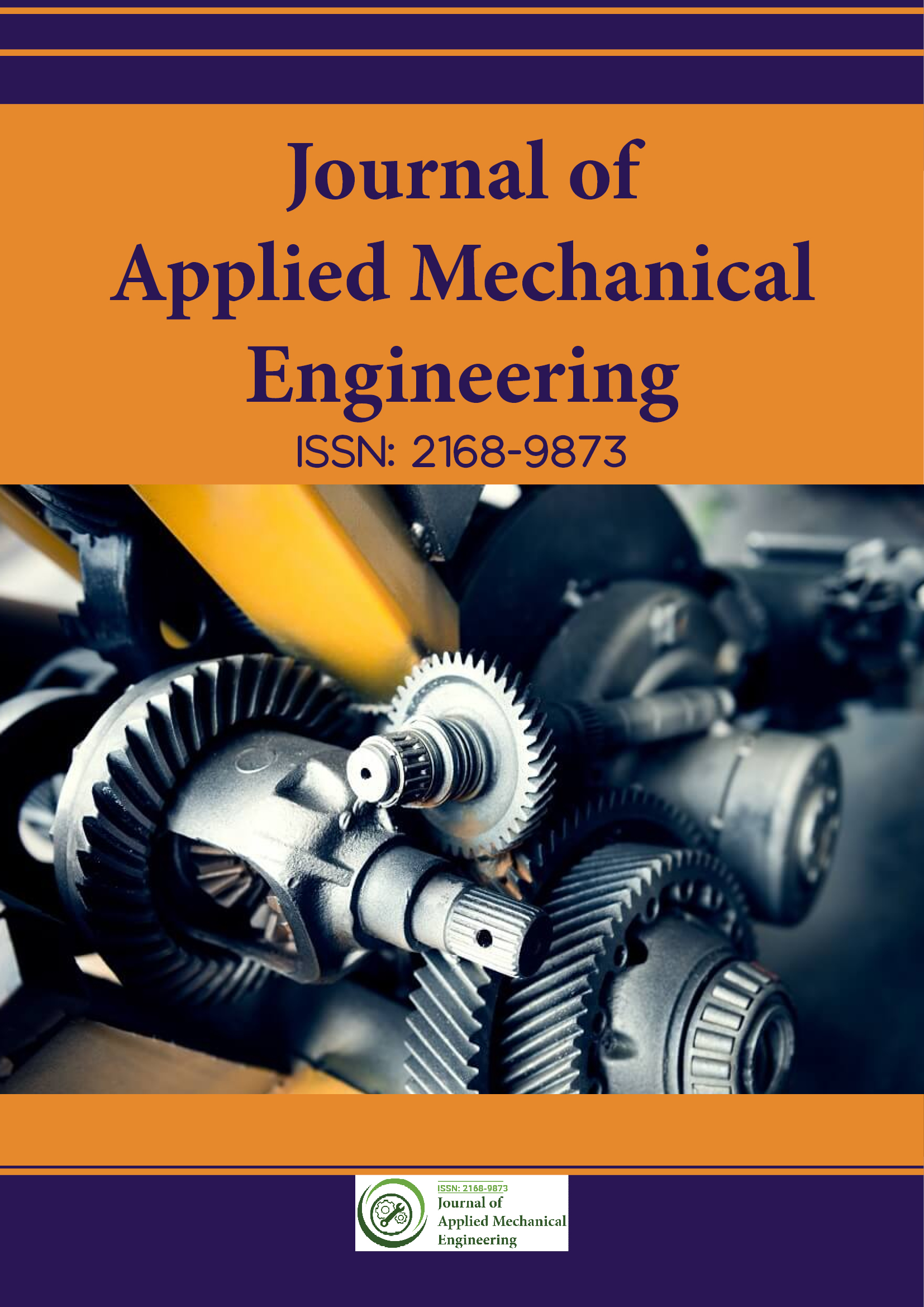Indexed In
- Genamics JournalSeek
- JournalTOCs
- CiteFactor
- RefSeek
- Hamdard University
- EBSCO A-Z
- OCLC- WorldCat
- Publons
- Google Scholar
Useful Links
Share This Page
Journal Flyer

Open Access Journals
- Agri and Aquaculture
- Biochemistry
- Bioinformatics & Systems Biology
- Business & Management
- Chemistry
- Clinical Sciences
- Engineering
- Food & Nutrition
- General Science
- Genetics & Molecular Biology
- Immunology & Microbiology
- Medical Sciences
- Neuroscience & Psychology
- Nursing & Health Care
- Pharmaceutical Sciences
Perspective - (2025) Volume 14, Issue 1
Elastomers in Mechanical Engineering: Unveiling the Flexibility and Versatility of Rubber
Christopher Kubalak*Received: 14-Nov-2023, Manuscript No. JAME-23-23910; Editor assigned: 17-Nov-2023, Pre QC No. JAME-23-23910 (PQ); Reviewed: 01-Dec-2023, QC No. JAME-23-23910; Revised: 03-Jan-2025, Manuscript No. JAME-23-23910 (R); Published: 13-Jan-2025, DOI: 10.35248/2168-9873.25.14.528
Descripition
Elastomers, a class of polymers known for their remarkable elasticity and flexibility, play a pivotal role in the realm of mechanical engineering. These materials commonly referred to as rubber, exhibit unique properties that make them indispensable in a myriad of applications, ranging from automotive components to industrial machinery. In this article, we explore the diverse characteristics, manufacturing processes and applications of elastomers in mechanical engineering.
Elastomers are a type of polymer characterized by their ability to return to their original shape after being deformed under stress. This exceptional elasticity is attributed to the long-chain molecular structure of elastomers, which allows them to undergo significant deformation without permanent changes in their structure. The primary building blocks of elastomers include rubber molecules, cross-linking agents and reinforcing fillers.
Characteristics of elastomers
The defining feature of elastomers is their ability to deform under stress and return to their original shape when the stress is removed. This property makes them ideal for applications requiring resilience and flexibility.
Elastomers can undergo significant deformation without breaking. Their high ductility allows them to withstand repeated stretching and compression, making them durable in dynamic applications.
Elastomers have a low Young's modulus, indicating that they require relatively low stress to achieve a given amount of deformation. This property contributes to their excellent elastic behavior.
Elastomers often exhibit resistance to various chemicals, oils and solvents, depending on their composition. This makes them suitable for applications where exposure to harsh environments is a concern.
Manufacturing processes
Vulcanization: Vulcanization is a critical process in the production of elastomers. It involves the addition of sulphur and other curing agents to the rubber compound, creating cross-links between polymer chains. This cross-linking imparts enhanced strength, elasticity and thermal stability to the elastomer.
Extrusion and moulding: Elastomers are commonly processed using extrusion and moulding techniques. Extrusion involves forcing the elastomer through a die to create a continuous profile, while moulding allows for the production of specific shapes and components.
Injection moulding: Injection moulding is widely used for producing complex elastomeric components. It involves injecting molten rubber into a mould cavity, where it solidifies and takes the shape of the mould.
Elastomers find extensive use in the automotive industry, where their flexibility and resilience are leveraged for various components. From tires and engine mounts to gaskets and seals, elastomers contribute to the comfort, safety and efficiency of vehicles. Additionally, elastomeric bearings are employed in suspension systems, dampening vibrations and improving ride quality. The ability of elastomers to form effective seals against liquids and gases makes them essential in mechanical systems. Orings, gaskets and other sealing components prevent leaks and ensure the integrity of pipelines, hydraulic systems and industrial machinery. Elastomers are prevalent in everyday consumer products, from rubber bands and erasers to shoe soles and kitchen utensils. Their versatility allows for the creation of products that require both flexibility and durability. In industrial settings, elastomers contribute to the functionality and longevity of machinery. Vibration isolators, couplings, and shock absorbers made from elastomeric materials help dampen vibrations, reduce noise and protect equipment from excessive wear and tear. The medical field benefits from elastomers in the manufacturing of various devices. Elastomeric materials are used in prosthetics, catheters, gloves and seals for medical equipment due to their biocompatibility and flexibility.
Despite their many advantages, elastomers present certain challenges in mechanical engineering applications. Elastomers can be sensitive to extreme temperatures, leading to changes in their mechanical properties. High temperatures can cause softening, while low temperatures may result in increased stiffness. Engineers must consider the operating temperature range when selecting elastomers for specific applications. While elastomers exhibit resistance to many chemicals, their compatibility can vary. Engineers need to carefully evaluate the chemical environment in which elastomers will be used to ensure optimal performance and longevity. Elastomers are subject to degradation over time, especially when exposed to environmental factors such as UV radiation, ozone, and oxygen. This degradation can affect their mechanical properties and lifespan, necessitating appropriate preventive measures and material selection. The mechanical properties of elastomers can be enhanced by incorporating reinforcing fillers, such as carbon black or silica, during the manufacturing process. However, the type and amount of filler must be carefully chosen to achieve the desired balance of properties.
Conclusion
Elastomers, with their unique combination of elasticity, durability, and chemical resistance, are integral to the fabric of mechanical engineering. From the tires that roll on the roads to the seals that keep machinery running smoothly, elastomers contribute to the functionality and efficiency of countless applications. As technology advances, innovations in manufacturing processes, material formulations and application techniques will continue to expand the boundaries of what is achievable with elastomers. The flexibility and versatility of elastomers make them a cornerstone of mechanical engineering, ensuring that the world remains in motion with the help of these resilient materials.
Citation: Kubalak C (2025) Elastomers in Mechanical Engineering: Unveiling the Flexibility and Versatility of Rubber. J Appl Mech Eng. 14:528.
Copyright: © 2025 Kubalak C. This is an open-access article distributed under the terms of the Creative Commons Attribution License, which permits unrestricted use, distribution, and reproduction in any medium, provided the original author and source are credited.

